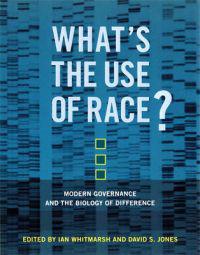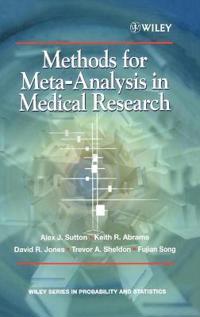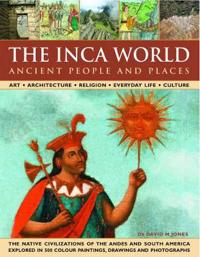Angels (Inbunden)
avDavid Albert Jones
ISBN: 9780199582952 - UTGIVEN: 2010-03What are angels? Where were they first encountered? Can we distinguish angels from gods, faeries, ghosts, and aliens? And why do they remain so popular? In this introduction to the history of angels, David Albert Jones outlines some of the more prominent stories and speculations about angels in Juda[...]
New Inside Out: Teacher's Book with Test CD Pack: Beginner (Övrig)
avAdrian Tennant, David Seymour, Chris Dawson, Caroline Brown, Helena Gomm, Vaughan Jones
ISBN: 9780230020931 - UTGIVEN: 2007-03-31The Political Impossibility of Modern Counterinsurgency (Inbunden)
avM. L. R. Smith, David Martin Jones, M. L. R. Smith
ISBN: 9780231170000 - UTGIVEN: 2015-05The counterinsurgency (COIN) paradigm dominates military and political conduct in contemporary Western strategic thought. It assumes future wars will unfold as "low intensity" conflicts within rather than between states, requiring specialized military training and techniques. COIN is understood as a[...]
What's the Use of Race? (Pocket)
avIan (EDT) Whitmarsh, David S. (EDT) Jones, Ian (EDT) Whitmarsh
ISBN: 9780262514248 - UTGIVEN: 2010-04The post--civil rights era perspective of many scientists and scholars was that race was nothing more than a social construction. Recently, however, the relevance of race as a social, legal, and medical category has been reinvigorated by science, especially by discoveries in genetics. Although in 20[...]
Native North American Armor, Shields, and Fortifications (Häftad)
avDavid E. Jones
ISBN: 9780292701700 - UTGIVEN: 2004-05From the Chickasaw fighting the Choctaw in the Southeast to the Sioux battling the Cheyenne on the Great Plains, warfare was endemic among the North American Indians when Europeans first arrived on this continent. An impressive array of offensive weaponry and battle tactics gave rise to an equally i[...]
Poison Arrows (Häftad)
avDavid E. Jones
ISBN: 9780292722293 - UTGIVEN: 2007-02Biological warfare is a menacing twenty-first-century issue, but its origins extend to antiquity. While the recorded use of toxins in warfare in some ancient populations is rarely disputed (the use of arsenical smoke in China, which dates to at least 1000 BC, for example) the use of "poison arrows" [...]
Introductory Sociology (Pocket)
avTony Bilton, Kevin Bonnett, Pip Jones, Tony Lawson, David Skinner, Michelle Stanworth
ISBN: 9780333945711 - UTGIVEN: 2002-05-17"Introductory Sociology" is a textbook structured to cover all the main substantive topics studied at an introductory level within a framework that engages with contemporary debates about modernity, globalization and social identity.[...]
An Introduction to the Theory of Point Processes (Inbunden)
avD. J. Daley, David Vere-Jones, D. J. Daley
ISBN: 9780387213378 - UTGIVEN: 2008-02This is the second volume of the reworked second edition of a key work on Point Process Theory. Fully revised and updated by the authors who have reworked their 1988 first edition, it brings together the basic theory of random measures and point processes in a unified setting and continues with the [...]
An Introduction to the Theory of Point Processes (Inbunden)
avDaryl J. Daley, David Vere-Jones, Daryl J. Daley
ISBN: 9780387955414 - UTGIVEN: 2002-12Point processes and random measures find wide applicability in telecommunications, earthquakes, image analysis, spatial point patterns, and stereology, to name but a few areas. The authors have made a major reshaping of their work in their first edition of 1988 and now present their Introduction to [...]
Leading And Implementing Business Change Management (Pocket)
avDavid J. Jones, Ronald J. Recardo
ISBN: 9780415660617 - UTGIVEN: 2013-05-15Skeletal Muscle (Häftad)
avDavid Anthony Jones, Arnold De Haan, Joan Round
ISBN: 9780443074271 - UTGIVEN: 2004-03Understanding the function of skeletal muscle requires knowledge of its structure from the level of gross anatomy down to that of molecular organization. This book is mainly concerned with skeletal muscle physiology sand biochemistry, and covers from embryonic development, muscle organization, energ[...]
Moore's Law (Inbunden)
avArnold Thackray, David Brock, Rachel Jones
ISBN: 9780465055647 - UTGIVEN: 2015-05Our world today--from the phone in your pocket to the car that you drive, the allure of social media to the strategy of the Pentagon--has been shaped irrevocably by the technology of silicon transistors. Year after year, for half a century, these tiny switches have enabled ever-more startling capabi[...]
Million-Dollar Hire: Build Your Bottom Line, One Employee at a Time (Häftad)
avDavid P. Jones
ISBN: 9780470928424 - UTGIVEN: 2011-05-31Methods for Meta-Analysis in Medical Research (Inbunden)
avAlexander Julian Sutton, Keith R. Abrams, David R. Jones
ISBN: 9780471490661 - UTGIVEN: 200012Meta-analysis provides a framework for combining the results of several clinical trials and drawing inferences about the effectiveness of medical treatments. The move towards evidence-based health care and practice is underpinned by the use of meta-analysis. Meta-analysis methods play a crucial role[...]
Handbook of Viscoelastic Vibration Damping (Inbunden)
avDavid I. G. Jones
ISBN: 9780471492481 - UTGIVEN: 2001-05-31Cambridge International AS Level and A Level Physics Coursebook with CD-ROM (Övrigt)
avDavid Sang, Graham Jones, Richard Woodside
ISBN: 9780521183086 - UTGIVEN: 2010-07Covers all the requirements of the Cambridge International AS and A Level Physics syllabus (9702). Cambridge International AS and A Level Physics covers all the material required for the Cambridge syllabus and is now available in both print and e-book formats. The print book includes a Student CD-R[...]
Complex Functions (Häftad)
avGareth A. Jones, David Singerman
ISBN: 9780521313667 - UTGIVEN: 198703Elliptic functions and Riemann surfaces played an important role in nineteenth-century mathematics. At the present time there is a great revival of interest in these topics not only for their own sake but also because of their applications to so many areas of mathematical research from group theory [...]
Beethoven, Pastoral Symphony (Pocket)
avDavid Wyn Jones
ISBN: 9780521456845 - UTGIVEN: 1995-11Beethoven?s Pastoral Symphony is in many ways his most startlingly original symphony. It has a programmatic content, it is in five movements rather than the normal four, and its mood is quite different from the usual barnstorming image of the composer. Why did he want to compose such a work? Why did[...]
Rationalizing Epidemics (Inbunden)
avDavid S. Jones
ISBN: 9780674013056 - UTGIVEN: 200405Ever since their arrival in North America, European colonists and their descendants have struggled to explain the epidemics that decimated native populations. Century after century, they tried to understand the causes of epidemics, the vulnerability of American Indians, and the persistence of health[...]
Dermatology (Häftad)
avDavid Gawkrodger, Michael R Ardern-Jones
ISBN: 9780702044496 - UTGIVEN: 201206This concise textbook of dermatology is aimed at medical students, those preparing for the MRCP and MRCGP examinations and specialist nurses. The information is presented in a highly accessible format, using double page spreads for each topic. Extensive use of colour for both clinical photographs an[...]
Deleuze and Film (Häftad)
avDavid Martin-Jones
ISBN: 9780748641208 - UTGIVEN: 2012-04A wide-ranging collection of essays on the film-philosophy of Gilles Deleuze Deleuze and Film explores how different films from around the world 'think' about a range of topics like history, national identity, geopolitics, ethics, gender, genre, affect, religion, surveillance culture, digital aesth[...]
The Inca World (Inbunden)
avDavid M. Jones
ISBN: 9780754817260 - UTGIVEN: 2010-10This fascinating visual history tells the story of the ancient peoples of Peru and the Andes. Split into two sections, the first part of the book focuses on how these communities functioned, and day-to-day life for ordinary people at work and home. The second part of the book tells the story of the [...]
The Illustrated Encyclopedia of the Aztec & Maya (Inbunden)
avCharles Phillips, David M. Jones, Charles Phillips
ISBN: 9780754817291 - UTGIVEN: 200706The definitive chronicle of the ancient peoples of Mexico & Central America - including the Aztec, Maya, Olmec, Mixtec, Toltec & Zapotec Over 1000 colour photographs, paintings, artefacts, maps & artworks explore the magnificent art, architecture, mythology & social history[...]
Understanding Central Banking (Pocket)
avDavid M. Jones
ISBN: 9780765642516 - UTGIVEN: 2014-01Employing a light and lively writing style, the book starts with the history of central banking in England and then shifts focus to the United States, explains in detail how the Fed works, and covers the Fed's unprecedented activities to prevent the Great Recession from spiraling into the Greatest D[...]
Veterinary Techniques for Llamas and Alpacas (Häftad)
avDavid E. Anderson, Meredyth L. Jones, Matt D. Miesner
ISBN: 9780813819877 - UTGIVEN: 2013-05-31



























